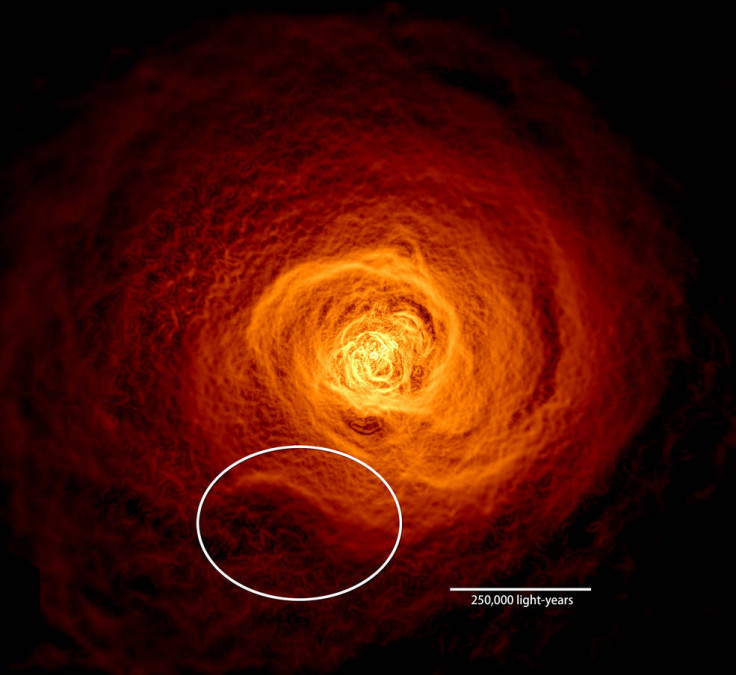Giant intergalactic wave seen surging through nearby Perseus cluster
It is a large anomaly in the biggest kind of gravity-bound structure there is in the universe.
A wave measuring 200,000 light years across – twice the size of the Milky Way – has been spotted in the hot gas of the Perseus galaxy cluster.
The Perseus galaxy cluster lies about 240 million light years away from the Milky Way, and is about 11 million light years across. Most of the galaxy cluster's matter is found in extremely hot gas clouds at an average of tens of millions of degrees.
There are several known types of anomaly in galaxy clusters such as Perseus. The supermassive black hole in the cluster's central galaxy, NGC 1275, has been known to blow enormous bubbles. The scientists used observations of the hot gas glowing in X-rays from NASA's Chandra X-ray Observatory to get to the bottom of the problem.
The wave didn't have the right shape to be formed by a bubble from a black hole, and was travelling in the wrong direction to have been caused by ordinary swishing about of Perseus' gas.
The scientists used supercomputer simulations to test what else might have formed the wave. The best explanation was that the wave formed billions of years ago when a smaller galaxy cluster skimmed past Perseus, creating a huge ripple effect in the hot gas as it past.
"Perseus is one of the most massive nearby clusters and the brightest one in X-rays, so Chandra data provide us with unparalleled detail," said study author Stephen Walker of NASA's Goddard Space Flight Center in a statement.
"The wave we've identified is associated with the flyby of a smaller cluster, which shows that the merger activity that produced these giant structures is still ongoing."

The galaxy cluster that passed by would have been about 1,000 times the size of the Milky Way, passing at a distance of about 650,000 light years from the Perseus cluster's centre.
"Galaxy cluster mergers represent the latest stage of structure formation in the cosmos," said John ZuHone, an astrophysicist at the Harvard-Smithsonian Center for Astrophysics in Cambridge, Massachusetts, who developed computer simulations used in the study.
"Hydrodynamic simulations of merging clusters allow us to produce features in the hot gas and tune physical parameters, such as the magnetic field. Then we can attempt to match the detailed characteristics of the structures we observe in X-rays."
The finding is published in a paper in the Monthly Notices of the Royal Astronomical Society.

© Copyright IBTimes 2025. All rights reserved.





















